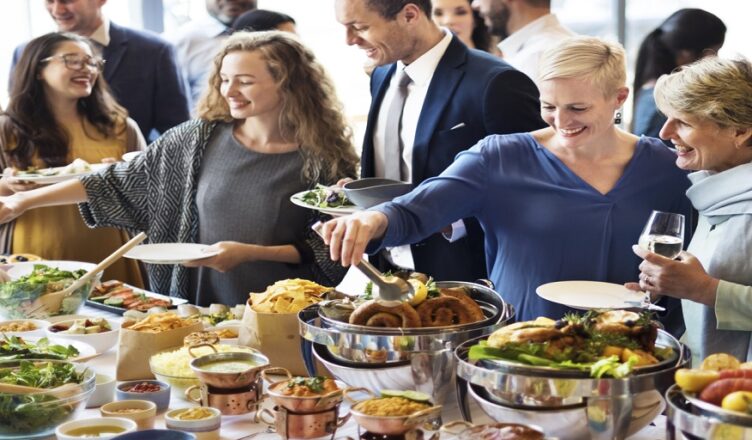There’s nothing quite like that first bite into perfectly cooked ribs—the kind that barely need a tug to come off the bone. Whether smoked for hours or slow-roasted to perfection, the secret lies in techniques that transform tough meat into something unforgettable. For those searching for the best ribs near me, understanding what makes them melt-in-your-mouth tender can make all the difference in your next BBQ experience.
Slow and Low Cooking That Turns Tough Ribs into Tender Perfection
Ribs are naturally tough, loaded with connective tissue that requires patience to break down. Cooking them too fast at high heat results in chewy, dry meat that no amount of sauce can fix. Instead, the magic happens when ribs are cooked at a low temperature over an extended period, allowing time for the collagen to break down into gelatin, creating a rich, succulent texture.
The right low-and-slow method depends on the style. Pitmasters often swear by a smoker hovering around 225°F, letting the smoke and heat gradually work their way into the meat. Others rely on slow-roasting in an oven before finishing with a kiss of flame for that perfect char. Regardless of the approach, the goal remains the same—give the ribs the time they need to tenderize naturally, ensuring that every bite is worth the wait.
Why the Right Amount of Smoke Makes Ribs Rich, Flavorful, and Fall-apart Soft
Smoke does more than add depth to the flavor—it’s an essential part of what makes great BBQ near me stand out. But too much can overwhelm the meat, creating bitterness instead of balance. Achieving that perfect harmony between wood smoke and seasoning is what separates good ribs from legendary ones.
Different woods impart unique flavors. Hickory and mesquite deliver bold, deep smokiness, while fruitwoods like apple and cherry offer a milder, slightly sweet profile. The right balance of heat and exposure ensures that the ribs soak up just enough smokiness without drying out. When done correctly, the ribs develop a beautiful bark on the outside while staying moist and tender inside, delivering that classic BBQ experience with every bite.
The Secret Resting Time That Locks in Juices for That Melt-in-your-mouth Texture
One of the most overlooked secrets in cooking ribs is letting them rest after they’re done. Just like with a great steak, pulling ribs straight from the heat and cutting into them too soon causes all those flavorful juices to run out, leaving the meat drier than it should be. Resting gives the meat time to reabsorb moisture, keeping every bite juicy.
Wrapping the ribs in foil and letting them sit for 15 to 30 minutes allows the muscle fibers to relax and redistribute their juices. Some pitmasters even use a cooler to hold cooked ribs at the perfect temperature, ensuring they stay warm while finishing touches like sauce or a final sear are applied. This resting step may seem small, but it plays a massive role in achieving that soft, fall-apart texture people crave.
How a Well-timed Baste Keeps Ribs Moist Without Overpowering the Flavor
A great baste does more than add flavor—it keeps ribs from drying out during the cooking process. But the timing has to be just right. Basting too early can cause sugars in the sauce to burn, leaving a bitter aftertaste. Waiting until the ribs have had time to develop their crust allows the flavors to enhance rather than overpower.
Traditional BBQ near me often relies on a mop sauce—a thinner, vinegar-based mixture that adds moisture without creating a sticky coating too soon. Others opt for a thicker glaze applied toward the end of cooking, caramelizing under low heat for that signature glossy finish. The key is layering flavors carefully, ensuring the ribs stay moist without losing their natural smokiness.
Why the Perfect Blend of Heat and Humidity Makes All the Difference
Cooking ribs isn’t just about temperature—it’s about creating the right environment. Dry heat alone can toughen the meat, while too much moisture can leave them mushy. The perfect balance of heat and humidity ensures ribs cook evenly, staying tender while developing that irresistible texture.
Many BBQ masters introduce steam by adding a pan of water to the smoker or oven. This helps keep moisture circulating, preventing the outer layers from drying out before the inside is fully cooked. In some methods, ribs are wrapped partway through the cooking process, trapping in steam to accelerate tenderness. This combination of controlled heat and humidity allows ribs to cook consistently, ensuring every bite is packed with flavor.
The Role of High-quality Cuts in Achieving Ribs That Practically Slide off the Bone
Even the best cooking techniques can’t fix poor-quality meat. The best ribs start with the right cut—ones that have enough marbling and the right amount of meat-to-bone ratio. St. Louis-style ribs, known for their even shape and rich flavor, are a favorite for many pitmasters. Baby back ribs, with their natural tenderness and slightly leaner profile, are another go-to for those who prefer a softer bite.
Great BBQ near me often sources ribs from trusted suppliers who understand the importance of quality. Well-marbled meat holds up to slow cooking better, breaking down into that silky, fall-apart texture people crave. Choosing the right ribs ensures the cooking process enhances the meat’s natural richness rather than just masking it with seasoning. When done right, the result is ribs that practically slide off the bone with little effort, delivering that unbeatable BBQ experience.

